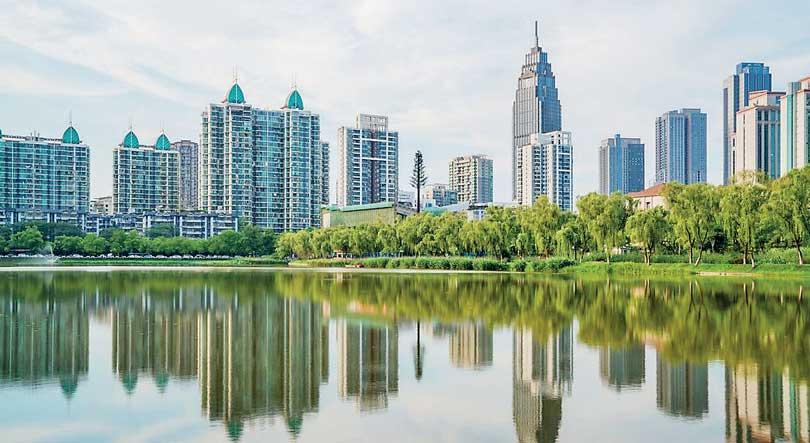Reply To:
Name - Reply Comment
That is the beauty and the beast of globalization and the complex interdependency of countries in it

 Wuhan, the capital of the Central Chinese Province of Hubei and now the epicentre of the deadly Coronavirus was my home for four memorable years. It is a fabulous city! If you had not heard much of it before, that is because it is also a grossly underrated one.
Wuhan, the capital of the Central Chinese Province of Hubei and now the epicentre of the deadly Coronavirus was my home for four memorable years. It is a fabulous city! If you had not heard much of it before, that is because it is also a grossly underrated one.
With a population of 11 million, more people than London, and a five-year infrastructure budget of $ 500 billion, it should have made headlines in the international media. But it was often overshadowed by China’s world-beating megacities, the likes of Beijing, Shanghai and Shenzhen and Guangzhou.
It is also an unappreciated University city, despite being the largest university town in the world.
In the last count, there were one million local and foreign students in 50 odd Universities there. That would make it a cosmopolitan melting pot. It is also one of the happening places and a genuinely affordable one at that.
Unlike in the costly coastal cities, Yuhan stretches a long way there, where beer is sometimes cheaper than water. You can buy a whole bottle of vodka for RM 200 in a night club, or for a quarter of that price from a corner shop, which has no closing hours.
I was so glued to this fascinating place, that during my four years there, I did not make a return trip home. Finally, I completed my PhD despite regular morning hangovers and a supervisor who was the least interfering.
Wuhan is the place to live, not because you can get cocked for cheap, and still pass exams. Unlike Beijing or Shanghai, of which formative years are long behind, history is making right before your eyes in this defacto capital of Central China.
Wuhan is the future. It is the clear frontrunner of the next wave of China’s emerging global cities. If you want to see China’s nerve-wracking economic, political and social transformation up and close, and probably from a much laidback ambience, there is no better place than Wuhan.
Wuhan is history too.Wuchang uprising, the rebellion in the Wuhan Army barracks in October 1911 usurped the Xinhai revolution that saw the collapse of China’s last Imperial Dynasty, the Qing.
China’s short-lived experiment with democracy began soon afterwards, but the new republic reverted to the autocratic reign of Yuan Shikai who restored monarchy with him as the emperor. At his abdication, China plunged into the warlordism of fratricidal generals and bandits. (Xi Jinping, China’s president cited chaos in that decade as a testimony to the mismatch of ‘Western-Style’ democracy with China’s social conditions.)
In the last count, there were one million local and foreign students in 50 odd Universities there. That would make it a cosmopolitan melting pot
Later for a short while in the 1920s, the Nationalist KMT made Wuhan the Capital. The Communists had headquarters in Wuchang, until another purge, this time overseen by Chiang Kai Shek, the nationalist military leader who ruled China from 1928 to 1949. After the communist takeover of China, he fled to Taiwan.
Wuhan also had Mao’s summer house perched in the bank of the East Lake. On one fine day in 1966, the great helmsman swam (So said the Communist Press then) from one bank to the other of Yangtze River in a media spectacle full of political theatre.
That was just before he plunged China into the carnage and mayhem of cultural revolution. If Wuhan swim is remembered for its symbolism, so is the city.
It is a damn shame that this city full of life and energy is now in lockdown. Wuhan has banned private vehicles from the city, taxies are no longer running. That this happened during the Lunar New Year holidays, the period of the world’s largest mammal migration, during when Wuhan gets half-vacated as migrant workers go home, makes things extra sordid.
There are around 80 Sri Lankan students and their families in Wuhan. Many have however left the city for the New Year vacation before the virus hit the city.
The Sri Lankan Government is reportedly making arrangements to evacuate the remaining students there.
The Sri Lanka Embassy in Beijing has submitted an application to land a Sri Lankan Airlines aircraft in Wuhan City Airport to airlift 32 Sri Lankan students including their family members, the foreign ministry said in a statement.
However, according to Chinese sources, Beijing is extremely wary of relaxing the lockdown. It is concerned about the threat of the virus breaking through the quarantine zone.
China has placed 18 cities with 56 million people in lockdown. To make matters worse, the mayor of Wuhan has told media that an estimated 5 million people have left the city for the lunar new year holiday before the lockdown was announced. Chinese authorities have also warned that the virus could spread even before people show symptoms.
80 people have died and more than 2,700 cases have been confirmed in mainland China and 50 cases have been reported in 13 places outside China.
Having learnt lessons from the 2003 SARS epidemic, during which China was accused of a cover-up, aggravating the scale of the epidemic, this time Beijing has published online the genetic sequence of the Wuhan Coronavirus for further study.
SARS lasted for eight months. If history is any guide, it will be long before things get back to normal in Wuhan.
China’s regular brush off with freshly minted viruses is partly due to a crazy Chinese, (Actually, an East Asian) fascination with some of the gut-wrenching types of animal products, either as a delicacy or aphrodisiac.
African poachers have decimated the wildlife looking for Rhino horns and ivory, and West Africans are overexploiting the sea bed for sea cucumbers.
SARS Virus is generally found in bats and is believed to have transmitted to humans from an infected civet cat. Wuhan Corna Virus is reportedly traced to a major fish market in Hankou which sold illegal wild animals.
China is the world’s largest market for illegal wildlife products, and the national law on wildlife trade is flouted openly. The extent of the Coronavirus epidemic might compel the Chinese authorities to have a second look at the illegal wildlife trade.
The economic impact of a potential spread of the virus is significant. When SARS struck, it was the government that was the big spender in investment-led economic growth. However, Wuhan virus has emerged at a time as China itself is going through an economic transition from an export-led economy to one driven by consumption.
If the contagion is not controlled soon, public consumption and private investment would take a beating. That would force the government to revert to the usual expensive stimulus to keep the new normal of 6 per cent growth.
As much as building an industrial and engineering powerhouse, China’s state capitalism is also responsible for creating a massive factory overcapacity and quite a bit of ghost cities. China’s policymakers have strived to avoid a repetition of it. Economic consequences of an epidemic would test their nerve.
Perhaps, the economic impact of Coronavirus would hit harder for countries including ours, that depend on Chinese investment and tourists than China itself. Economic shocks will travel as fast as, and probably further than the virus itself.
That is the beauty and the beast of globalization and the complex interdependency of countries in it.
Follow @RangaJayasuriya
on Twitter